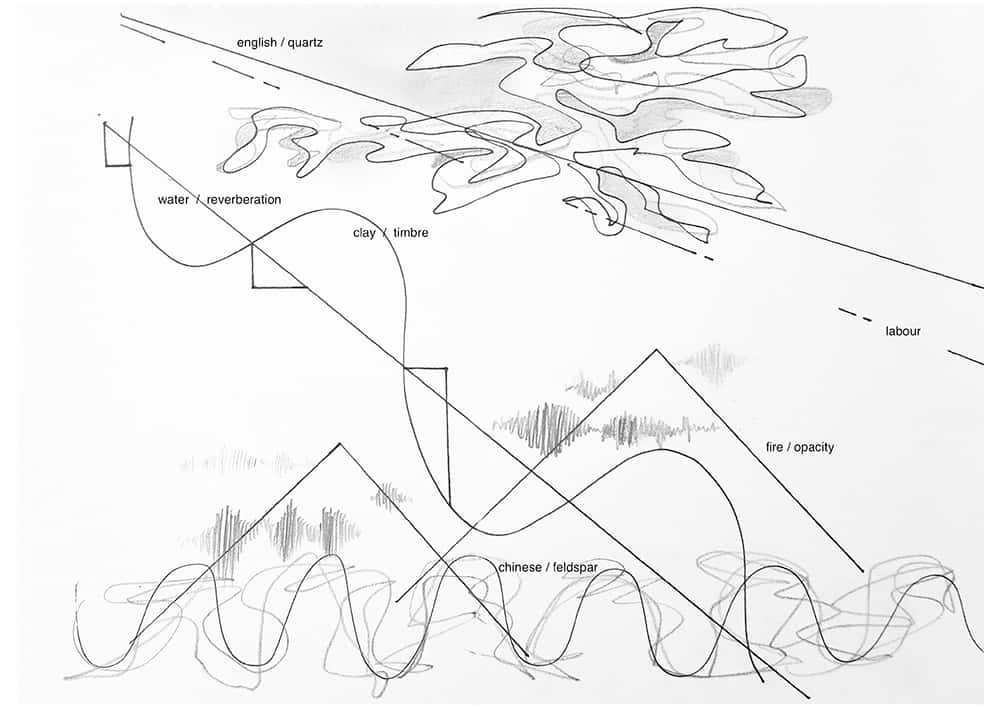Porcelain Heart has been live diffused at Temporeale 2023 (https://temporeale.it/en/) by Giulia Vismara (https://www.giuliavismara.com/).
It has also been diffused by Brona Martin (https://www.bronamartin.org/) for the 15th Audiovisual Arts Festival (AVfest), Department of Audio & Visual Arts, in collaboration with the ERHMEE Lab – Department of Music Studies, of the Ionian University, Corfu, Greece https://avarts.ionio.gr/festival/2022/en/
It has been installed at Intersections 2017 http://www.mat.qmul.ac.uk/students_projects/mat-intersections-2017/ or https://intersections.io/
Porcelain PARTS (Ambisonic field recordings which formed some of the sound materials for Porcelain Heart) was reamed online at Beast Feast 2021 https://beast.cal.bham.ac.uk/beast-feast-2021/friday-23-april/
Porcelain as a material is a complex and robust composite. The lengthy evolution of its production contains a wealth of historical and cultural significance. Using the techniques of granular synthesis, and sampled spoken word, Porcelain Heart attempts to forge form and content, taking as its raw materials the seemingly disparate elements of porcelain’s biography, and colliding them together. Porcelain becomes a metaphor, at times fluid, at times opaque, moving between the macro and micro structures in a piece which is as much about process as product. Note: I understand if you skip these words and head straight to the play button. In fact, I encourage it. You probably don’t have much time. Please spend it listening… The starting point for this project was the transformation process which take place under fast firing. “Because of the complex interplay between raw materials, processing routes and approaches and the kinetics of the firing process, porcelains represent some of the most complicated ceramic systems” (Carty and Senapati, 1998).
This valuation of cultural artifacts, with consequent labour markets, is explored, as is the history of the Chinese porcelain manufacturing, which has undergone many changes over such a vast period of time, with distinct evolutionary stages. The term ‘porcelain heart’ refers to a clinical paper written about a patient with hypertension and thoracic pain. The conceptual image that acts as graphic score the for this soundscape, is based on an inverted diagram of porcelain compositions (Carty and Senapati, 1998) and not only serves as a compositional framework but also resembles (somewhat!) a heart. Triangular diagrams are often used to show the compositional ranges in minerals, so triangulation seemed apt for use, retaining conceptual integrity across the very three elements necessary for porcelain – clay, quartz and feldspar. “Because of their three-part composition of clay, feldspar, and quartz, porcelains are referred to as triaxial whitewares (Carty and Senapati, 1998). The incorporation of granular synthesis – a form of particle synthesis – into the recording, helps represent the material transformation that takes place in porcelain production. In cardiology, auscultation refers to skilled listening – and it is this central idea that ties together the disparate parts of the Porcelain Heart soundscape.

Referring to the above score, one can understand the piece better; English speech (representing quartz) decreases over time, as the firing process (granular synthesis) changes the composition of the raw materials. However crystals of quartz (labour – represented by quotes from the porcelain factory workers in Boyd Gillette’s research) remain, affecting the strength of the end product. This double entendre refers to both strength of the industry, as well as to porcelain itself. Meanwhile reverberation is used to a decreasing extent on the tracks containing water (reverberation being ‘wet’ in the common sound recording lexicon, and water decreasing over time in porcelain firing). Tracks containing fire are heavily processed using granular synthesis, to impact their opacity. Changes to timbre (representing clay) are made to the factory worker quotes, partly for practical reasons (other recorded speech was conceptually tied to the other core materials of quartz and feldspar, and had been processed through granular synthesis where this stream of speech had not been effected) and partly for conceptual reasons (there were historic and cultural reasons for varying clay content and thus colour in porcelain production). Finally Mandarin speech (representing feldspar) is processing through granular synthesis to varying degrees over time. This reflects feldspar’s value as a flux in the production of porcelain.